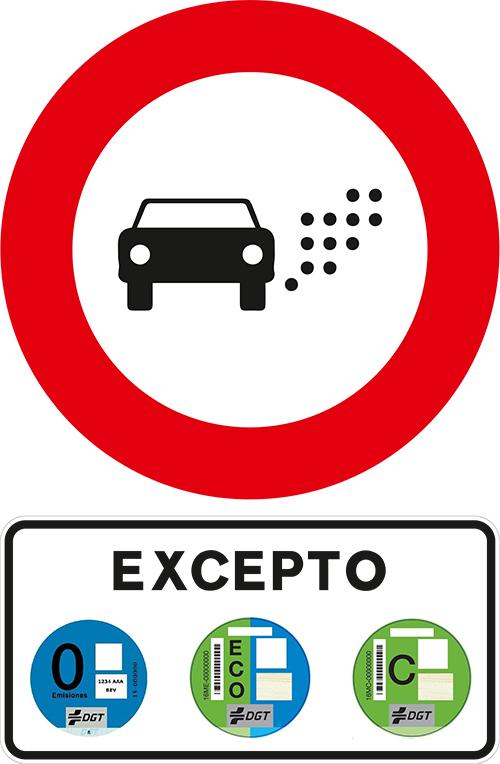The General Directorate of Traffic has published an instruction on Low Emission Zones and other regulations for access to vehicles in urban areas, better known by the English acronym UVAR, in which the vertical ZBE sign is created and invites local entities to communicate these areas to the DGT, as well as other regulations for access to vehicles that they establish in their municipalities to incorporate it into the DGT 3.0 platform and to be able to disseminate that information in real time and free of charge to all drivers.
This instruction will facilitate the application of the Climate Change law promoted by the Ministry for the Ecological Transition and the Demographic Challenge, which entered into force on May 22. The norm establishes that municipalities with more than 50,000 inhabitants – as well as those with more than 20,000 with non-compliance with air quality – and island territories, must establish low-emission zones before 2023. The Ministry for Ecological Transition and The Demographic Challenge is already working on some Guidelines for the establishment of LEZs that will facilitate their development within the framework of the provisions of the Law.
The LEZs contribute both to the improvement of air quality and the health of citizens as well as to the mitigation of climate change and noise pollution, and they represent a stimulus for the energy efficiency of transport, promoting its electrification.

Safer cities
In the same way, the instruction is aligned with what is requested by the European Union, which urges governments to publish common definitions and information protocols on the characteristics of the LEZs, and the rest of the city access regulations. The goal is for cities to be safe, healthy, and competitive, and for residents, transport operators, delivery people and visitors to urban areas to know in advance the current restrictions and to be able to adequately manage their mobility. Establishing a common signal to all municipalities is in line with the establishment of common protocols pursued by the European Union.
Madrid and the Barcelona Metropolitan Area have already begun to establish these low-emission zones, and other cities will continue to do so. For this reason, and following requests made by transport operators, as well as by local authorities to have a harmonised sign for all Spanish cities, the DGT has created a new vertical sign, easy to identify and that allows citizens to know approaching or entering an LEZ, as well as the traffic restrictions that affect them.
The sign that informs of the prohibited entry to a motor vehicle, except those vehicles that have the environmental mark indicated by the local entity in the lower part of the sign.
Information also on the DGT 3.0 platform
The instruction goes a step further and includes the possibility for local authorities to proactively participate in the ecosystem of connected mobility, facilitating the DGT the identification of the areas and roads included in the Low Emission Zones and any other restriction measure of access to your municipality.
According to Jorge Ordás, DGT’s Deputy Director of Mobility and Technology “ the DGT 3.0 connected vehicle platform is in a position to receive information on low-emission zones or other restrictions, their schedules and the type of vehicles they affect, in order to then share it for free and in real time through the National Access Point of traffic information, so that vehicle manufacturers, navigators and mobility applications will be able to know the degree of restriction that affects their itineraries in all moment, to establish smarter routes. We hope that this technology contributes to eliminating congestion derived from the hectic traffic of our cities”.




You must be logged in to post a comment.